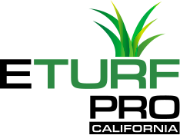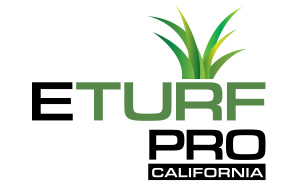Turf vs. Real Grass: Benefits, Drawbacks, and Maintenance
Modern turfs are engineering marvels. They look good all year round, are durable, and come in a variety of textures and colors to suit varied homeowner tastes. Real grass doesn’t have the same durability as artificial turf, has a significantly shorter lifespan, and requires more maintenance to upkeep. In this article, we’ll discuss the pros and cons of each, and help you make the right decision for your home or commercial needs.
Artificial turf has improved the quality of life for many people in the past few decades. No longer are they confined to concrete and asphalt; instead, they can enjoy the beauty of a lush, green lawn where real grass might otherwise not be capable of growing. As such, recent years have seen an ongoing debate between homeowners who want to grow real grass vs those who prefer turf. Let’s take a closer look as we explore varied turf benefits.
Turf vs. Real Grass: Benefits
First, turf maintenance varies from that of real grass. It takes significantly more work to keep real grass alive than maintain an artificial version. Mowing, watering, fertilizing, and weed control are all necessary for a healthy lawn but not required for artificial turf. If you do choose the real grass route, it will need more time and attention than its synthetic counterpart – and that can include ongoing maintenance costs that increase the price substantially.
Artificial turf comes in a variety of heights, types, colors, and looks that make turf maintenance easier. With synthetic grass, there are no weeds to pull or bugs to spray for, and with so many different varieties to choose from, there is something to suit every property owner’s needs.
Simply put, synthetic turf grass is much easier to live with, and the benefits are numerous. One such benefit is the incredibly low maintenance costs. Other benefits include the lack of needing water, fertilizer, mowing, and more, which otherwise may also eat into your budget. Artificial turf also lasts decades longer than real grass, which saves money on replacement costs in the long term.
Turf vs. Real Grass: Drawbacks
There are notable drawbacks to both options. For example, the up-front costs of artificial turf are usually more than real grass. In this way, it’s really a question of immediate versus delayed costs – if you’re willing to pay more up-front with artificial turf, you’ll pay less over time, and vice versa with real grass.
When it comes to major drawbacks of natural grass, the biggest one is that it requires more water than synthetic turf does. Additionally, rainy or snowy weather can cause brown patches in real grass, which is simply not a problem for its artificial counterpart: you can just hose it off!
Additionally, research has shown that there are other drawbacks to synthetic turf grass. One such downside is that turf fields can be more dangerous for pets and children due to the increased risk of slipping given the relatively harder, flatter surface. Another drawback is how it can affect property values – people usually place a premium on real grass over artificial turf, so homes with a preponderance of synthetic turf are usually valued lower than their natural counterparts.
Other downsides are that it does not allow for as much drainage in wet weather (which can lead to flooding) and it lacks the ability to support as many types of plants and animals as real grass can. Turf grass is also more difficult to repair than natural grass with respect to damage or wear.
Flora & Fauna on Artificial Turf
Synthetic turf does not support the wide variety of plants and animals as natural grass does. Insects, birds, or other creatures who may rely on the environment for food usually have a tough time adapting to turf environments, and many will simply leave.
However, that’s oftentimes part of the appeal – not every homeowner or field owner wants animals or plants on their property, as living things often lead to complications.
Even despite ‘spacings’ – small areas that are dug out to allow for natural plants to grow on artificial turf – many types of flora won’t grow in a synthetic yard regardless. If someone were trying to implement an eco-friendly yard with a plentiful assortment of plants, flowers, and insects, then, artificial lawns would not be suitable at all.
Maintenance: Repairing Artificial Turf vs. Real grass
Turf is by and large significantly more difficult to repair than natural grass because of its complex structure, and the fact that each blade is purposefully precision-crafted. Real grass, on the other hand, grows naturally and abundantly, and self-corrects wear-and-tear all the time.
Depending on the complexity, a turf system can also have a complex series of drainage pipes that connect to different regions, and this can make it difficult and costly to repair simple wear or damage. Real grass is easy, because it drains uniformly, and because the solution to most damage problems are as simple as fertilizing, watering, and waiting a couple of days for new grass to grow.


